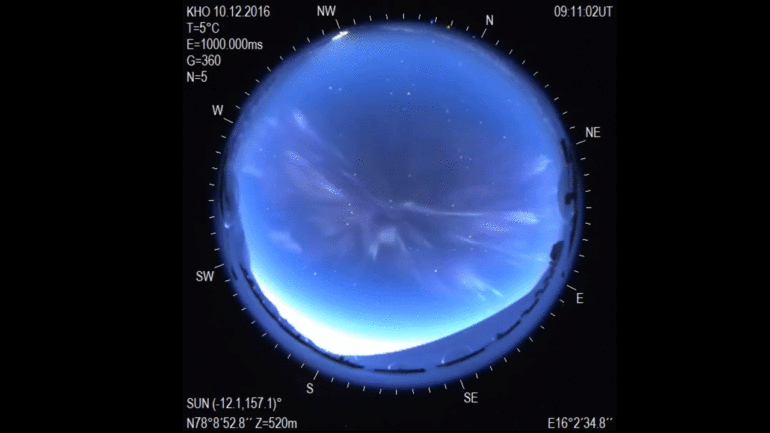Fresh findings about the edge of Earth’s atmosphere are puzzling scientists affiliated with two missions that launched this year, and then some.
This zone, at an altitude of roughly 50 to 400 miles (80 to 645 kilometers), is full of strange physical phenomena that scientists are only beginning to understand. In the ionosphere, charged particles released by the sun interact with gases at the top of Earth’s atmosphere in intriguing ways.
Take, for example, the “aurora seashell.” During a NASA internship, Jennifer Briggs spotted images of an Arctic aurora, or northern lights, that had a strange spiral. This whirlpool suggested a large disturbance in the magnetosphere, which is the zone bordering the ionosphere. Weirder still, the sun did not release any eruptions before the disturbance.
Briggs, an undergraduate physics student at Pepperdine University in California who was in search of the cause of the formation, scoured data from multiple sources: all-sky cameras, radars and NASA’s Magnetospheric Multiscale mission that studies this part of the atmosphere. And the result was surprising, according to a NASA statement.
Briggs and her colleagues found that a region called the foreshock seemed to cause the aurora seashell, rather than an outburst from the sun, according to a NASA statement. The foreshock occurs where energetic particles from the sun bounce off Earth’s magnetic field.
NASA has more data about the ionosphere than ever before; the agency has launched two new missions targeting the region within the past year.
The agency’s Global-scale Observations of the Limb and Disk (GOLD) satellite launched in January to geostationary orbit, roughly 22,000 miles (35,000 km)…



